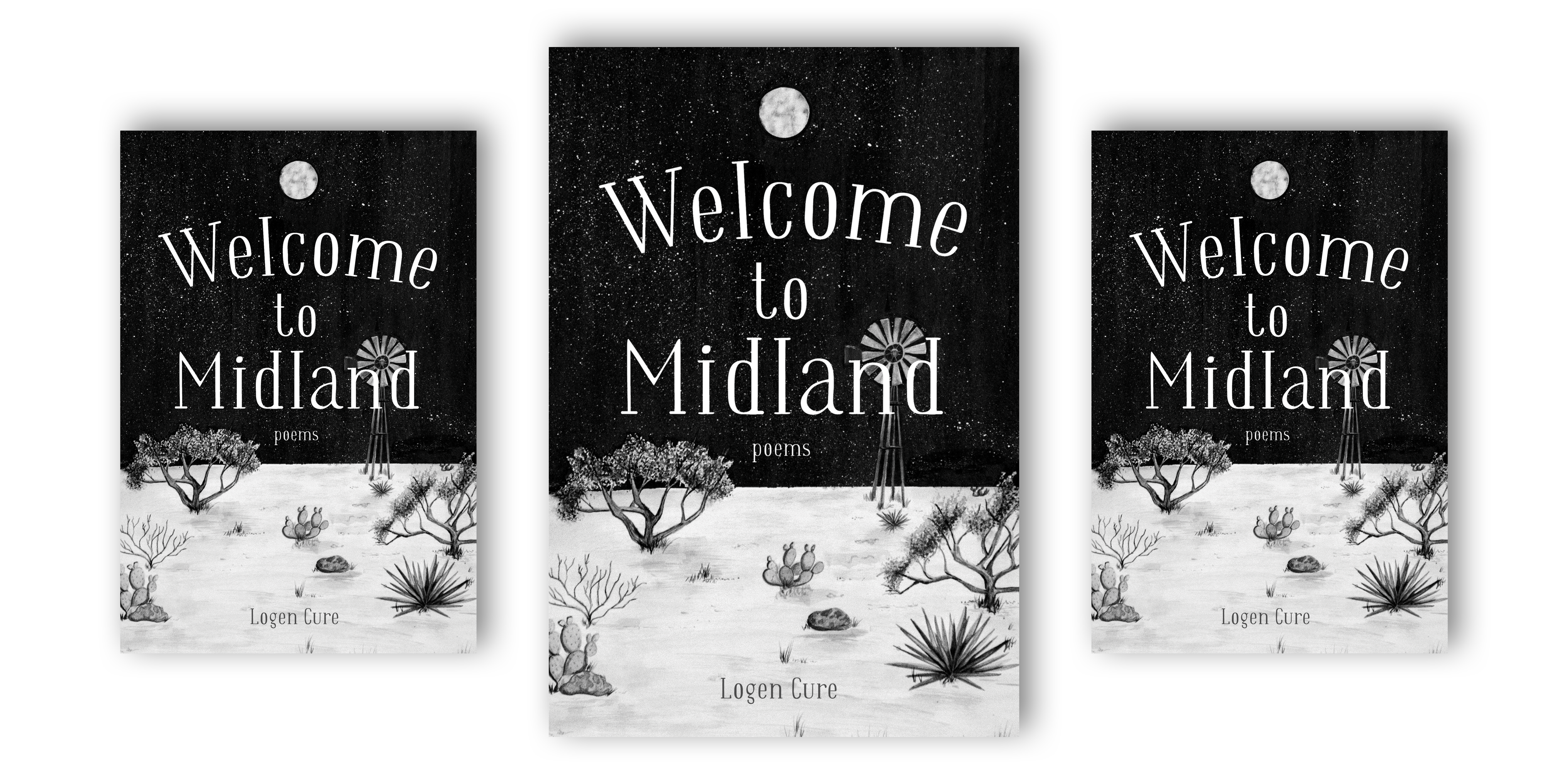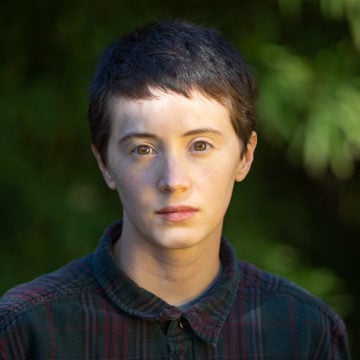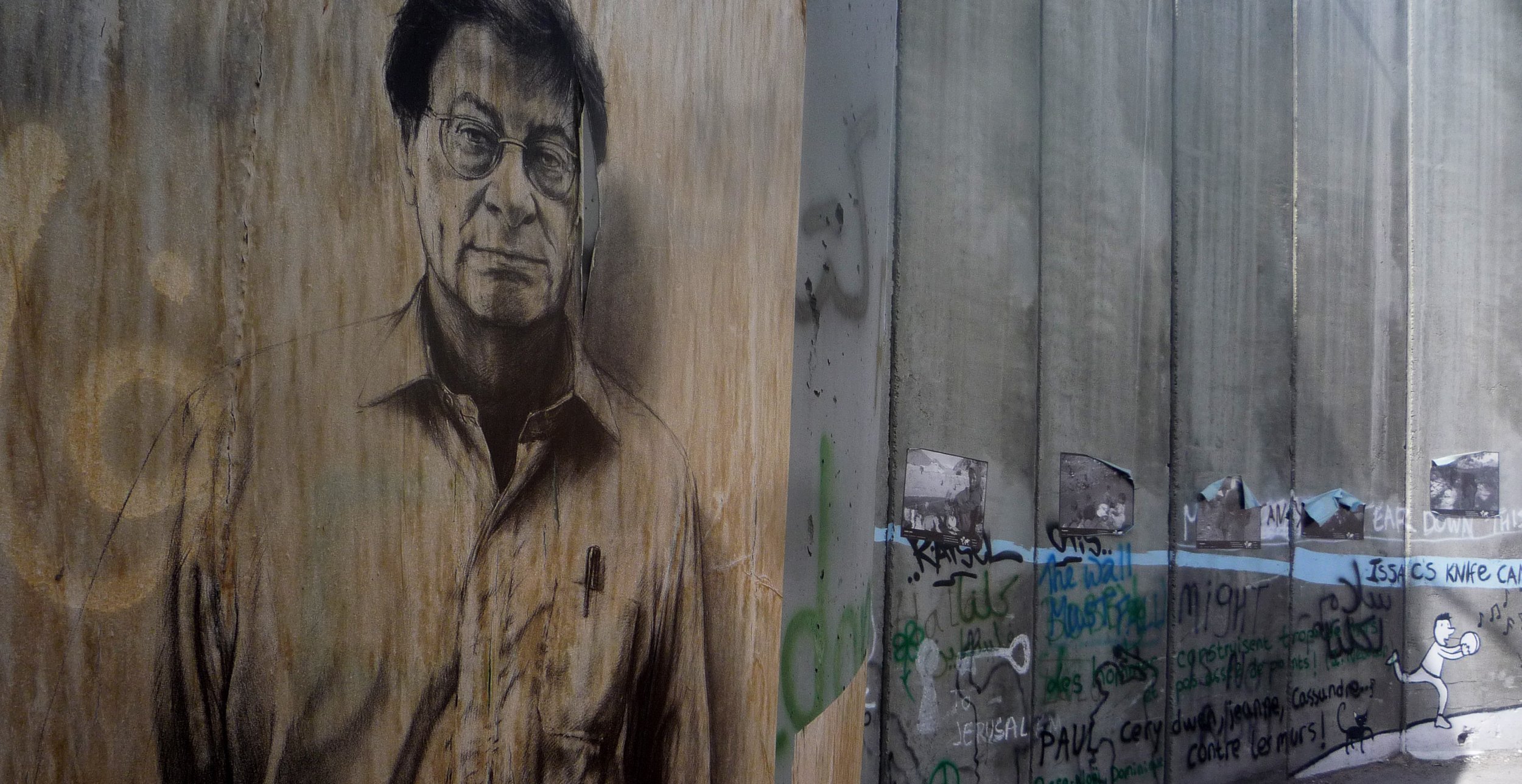
A Moving Debut Chronicles a Queer Coming-of-Age in Midland
Logen Cure’s poetry collection is an ode to the West Texas town.

Tarantula hawk wasps are beautiful bugs: They have iridescent blue-black bodies with yellow wings; large, doe-like eyes; and delicate frames with a seemingly magnetic connection between thorax and stinger. The hawks also boast the most painful sting in the world—scientists recommend that if stung, people should lie on the ground and scream for three minutes, the duration of the pain.

The hawks, parasites that paralyze tarantulas to feed to their young, are the subject of one of the poems in Welcome to Midland, a new book of poetry about a queer coming-of-age in West Texas oil country written by poet Logen Cure and published by Deep Vellum. The book includes odes to the flora, fauna, and history of Midland—such as coyotes and cacti, baby Jessica (a baby who fell into a well in the ’80s whose story was captured by national media), and a famous oil derrick. The first full-length poetry collection from Cure, a professor at Tarrant County College and an editor for Voicemail Poems, is a mature, thoughtful work.
Welcome to Midland is a novel in verse: Cure tells the story of her narrator’s upbringing in poetic form rather than essay. The book is sectioned off into four chronological parts, each telling the story of different parts of her childhood and adolescence. The book is also heavily illustrated with tattoo-worthy drawings by Ashley Shea Henderson—a unique feature that nicely complements the poems.
“Tarantula Hawk Wasp” is a fitting example of Cure’s poignant poetry. Cure writes of the wasps: “Can you imagine? The ability to choose your heirs, name your single threat, know everything you will hunger for.” The poem is a meditation on violence and identity that’s reflective of the rest of the collection—dark, raw, dream-like. Welcome to Midland is full of poems that sting.
The crux of this pain appears in the third of the book’s four sections. In her youth, the narrator experienced multiple sexual assaults and a physically and emotionally abusive relationship. An abusive partner told her that she was the only one who would ever love her. She stayed. Being queer in Midland complicated this harassment—her classmates taunted her, and one nearly ran her over with a truck in the high school parking lot. Of the community, Cure writes: “They say tomboy like bless her heart,” a Texas insult if ever there was one.

The account of the abusive relationship is difficult to sit with. The descriptions of abuse are clinical and potent; these pieces lack poetic language, despite being presented as poems. This tone is effective: The pain of the relationship is sharp. The reader leaves this section of the book with a deep sense of empathy for victims of abuse.
The most dream-like moments appear in the book’s first section, which describes the narrator’s childhood. In “Lucifer at the Tea Party,” she insists on wearing a devil costume to a tea party for one of her fellow preschoolers. The narrator doesn’t actually know that she remembers this—the poem is constructed from her mother’s memory and a photograph of the occasion. “Isn’t it strange?” Cure writes. “The way story blurs with memory, the sweet mythology we make of ourselves.” This blur colors the poems about her early childhood, which makes the section feel like an honest expression of memory.
The structure of the book is straightforward, if a little unsatisfying at times: Cure places pieces about Midland history and nature amid her poems, and the juxtapositions don’t always work. A poem about the destruction of the Scharbauer Hotel in the third section doesn’t quite fit between poems about rape and riding shotgun. When it does work, however, it’s extremely effective. “Santa Rita, 1921,” which documents the history of the region’s famous oil derrick, named for “the patron saint of impossible things,” is placed between a poem about the narrator’s own loves for girls with boyfriends and one on disapproving mothers—the heartbreaking impossibility of love in Midland.

In the book’s final section, things take a lighter turn. Here, Henderson’s many illustrations shine, and the section includes plenty of odes to the West Texas town. The summer the narrator graduated from high school includes moments of joy rarely found in the rest of the book. While it at times retains the book’s somber tone—particularly in poems about Midland’s racist history and Grendel’s mother (prompted by a high school Beowulf reading assignment)—here we find the author hopeful: kissing a friend goodbye in the rain; driving into the desert until the stars swallow her; jumping, finally, into the Devil’s Waterhole.
At the start of the book, Cure writes that, for her narrator, Midland is a town where all the roads end. But this might not be true—Midland is where her narrator grew, a town she eventually kissed goodbye. By the end, we realize that perhaps Midland was a town where the roads began.
Correction: This review originally stated that “Welcome to Midland” was a memoir. It is a book of poetry. This article has been updated to correct allusions to the book’s genre.


